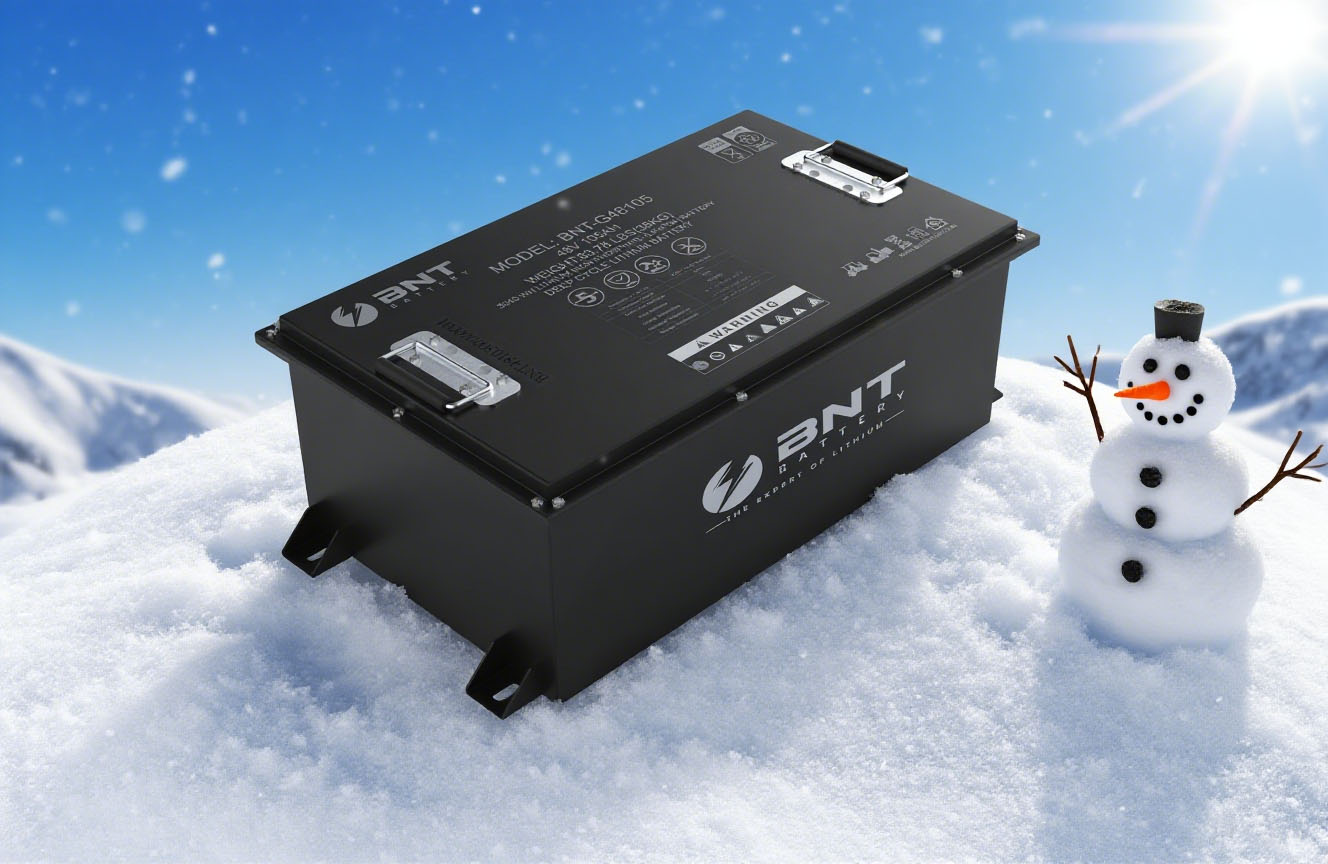Proper winter care is absolutely critical for the longevity of your lithium golf cart batteries. Unlike lead-acid batteries, they are much more resilient but have specific needs to ensure they survive the cold months in perfect health.Here is a comprehensive guide to winterizing and caring for your lithium golf cart batteries.
The Golden Rules of Lithium Battery Winter Storage
Store in a Dry, Climate-Controlled Place: This is non-negotiable. A garage, shed, or basement that does not freeze is ideal.
Charge to the Recommended State of Charge (SoC): This is the most important step for battery health.
Disconnect or Remove if Possible: A small draw over months can still discharge the battery.
Check Periodically: A quick check every 4-8 weeks ensures everything is on track.
Step-by-Step Winterization Guide
Follow these steps at the end of your golf season before storing the cart for an extended period.
1. Final Charge and State of Charge (SoC)
Give your golf cart lithium batteries one last full charge. Use the manufacturer-specific charger provided with your cart.
The Ideal Storage Voltage: The perfect state of charge for long-term storage of lithium batteries is around 50-70%. However, always check your battery’s user manual for the manufacturer’s specific recommendation. Many modern lithium batteries (especially LiFePO4 chemistry common in golf carts) are happiest at around 50% for storage.
Why? Storing a lithium battery at 100% charge for months on end puts continuous stress on the cells and can lead to minor capacity loss over time. Storing it completely dead can cause the battery’s voltage to drop too low, permanently damaging it. The ~50% level is a stable, low-stress state.
2. Clean and Inspect
Ensure the battery terminals and case are clean and dry. Wipe off any dust or debris.
Inspect for any signs of damage, swelling, or loose cables. Address any issues before storage.
3. Disconnect (Crucial Step!)
Turn the cart’s Run/Tow switch to the “Tow” position. This disengages the electronics and prevents any parasitic drain from the controller, dash, or accessories.
For ultimate peace of mind, you can disconnect the main negative terminal on the battery pack. This guarantees zero drain. (If you have multiple batteries wired together, you only need to disconnect one main terminal).
4. Choose the Right Storage Location
Temperature is Key: Store the cart and batteries in a place that will not freeze. While lithium batteries can handle cold discharge better than lead-acid, you should never charge them below freezing (32°F / 0°C).
Ideal Temperature: A cool, dry place between 40°F – 80°F (5°C – 27°C) is perfect. Avoid areas with large temperature swings.
Do Not Store Outside: Never leave the cart or battery pack outside exposed to the elements.
5. Periodic Check-Up (Once every 1-2 months)
Lithium batteries have a very low self-discharge rate (1-3% per month), so they will barely lose charge over the winter.
Simply check the battery’s state of charge via its meter or indicator lights. It should still be very close to the level you left it at.
If the charge has dropped significantly (e.g., below 20-30%), something is wrong. There may be a drain or a problem with the battery. Give it a partial charge back up to the recommended 50-70% storage level. Only charge if the battery temperature is above freezing.
What NOT to Do?
DON’T leave the battery plugged into the charger all winter. This will stress the cells.
DON’T store the battery in a completely discharged state.
DON’T store the cart in “Run” mode, as parasitic drain will slowly kill the battery.
DON’T attempt to charge the battery if it, or the environment, is below freezing.
DON’T ignore the manufacturer’s specific instructions—they know their product best.
Spring Wake-Up Call
When you’re ready to use the cart again, the process is simple:
Visually inspect the battery and connections.
Reconnect the main terminal if you disconnected it.
Turn the Run/Tow switch back to “Run.”
Before your first ride, give the batteries a full charge with the approved charger. This will balance the cells.
You’re good to go!
Why This Care is Different from Lead-Acid Batteries
No Memory Effect: You don’t need to fully discharge them before charging.
No Watering: Obviously, there are no fluid levels to check.
Low Self-Discharge: You don’t need a “trickle charger” or “battery maintainer” like you do for lead-acid. In fact, using a lead-acid maintainer on a lithium battery can damage it. Only use a maintainer if it is specifically designed for lithium chemistry and your battery’s manufacturer recommends it.
By following these steps, you are protecting your investment and ensuring your lithium golf cart batteries will provide you with many years of reliable service and superior performance.
Post time: Oct-14-2025

